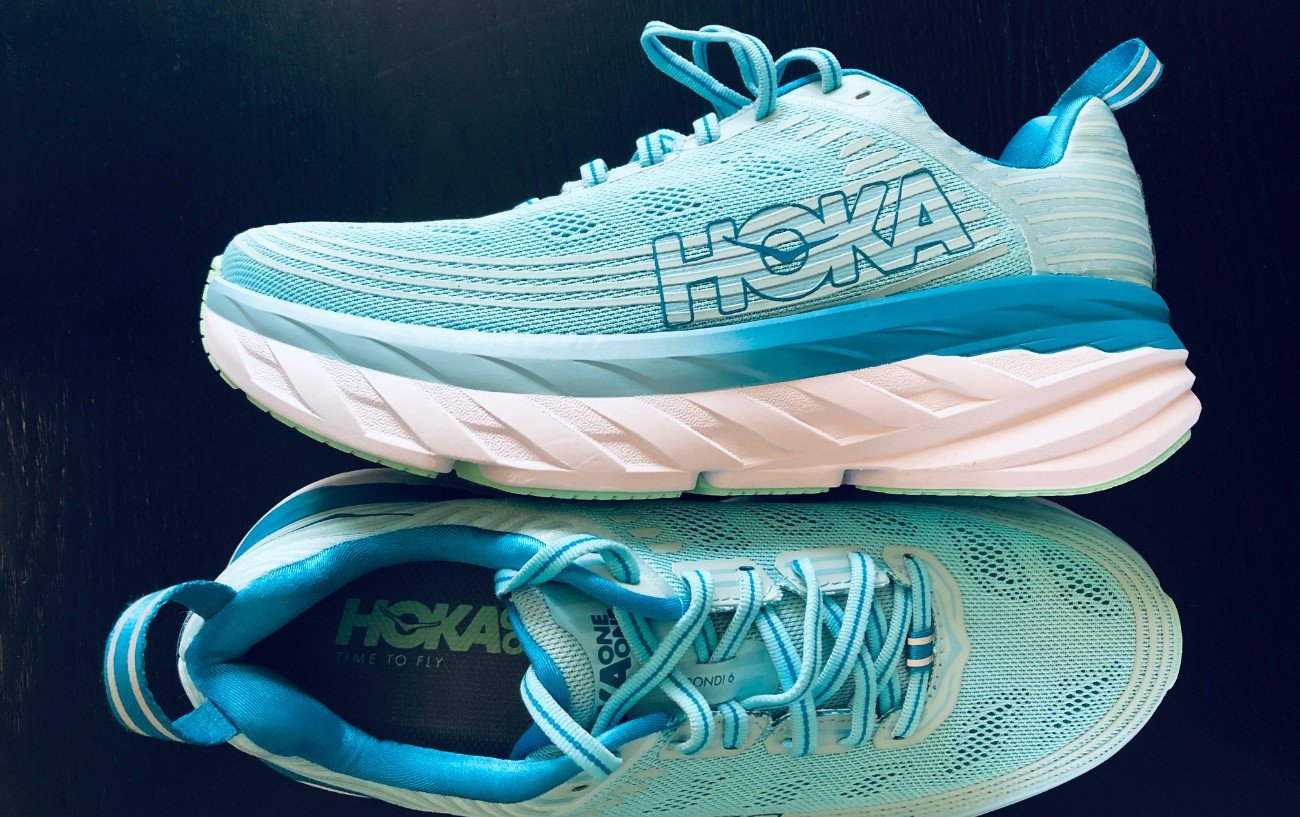Neutral and stability running shoes are two of the most common types of running shoes, but many runners are unsure which option to choose when making the purchasing decision.
Is it better to run in neutral running shoes if you haven’t dealt with many injuries in the past? Is it better to choose a stabilityrunning shoe if you have battled injuries?
When determining whether to opt for a neutral or stability running shoe, two key elements come into play: the height and flexibility of your arch, alongside the extent of your pronation.
Neutral running shoes offer flexibility and cushioning for a natural stride, while stability running shoes provide support to control pronation and guide foot motion. Both have their pros and cons.
The information you read in this article will help to arm you with the knowledge you need to enter any running store with a general sense of which type of running shoe is best suited for your needs.

What Are Neutral Running Shoes?
So, before we can compare the two options, let’s provide the basics of each type of running shoe.
What are neutral running shoes?
Neutral running shoes are a type of shoe that lacks any type of stabilizing features.
Rather than aiming to control your foot positioning in any sort of manner, neutral running shoes simply aim to provide flexibility for a smooth heel-to-toe transition and freedom to follow your natural strike pattern in the most unencumbered way.
Neutral running shoes typically provide cushioning in the heel to absorb shock at ground contact and some cushioning in the forefoot to facilitate push-off.

What Are Stability Running Shoes?
In contrast to a neutral running shoe, which does not offer any type of stabilizing features or support, a stability running shoe incorporates materials and design elements that aim to guide your foot strike through the correct path of motion as you run.
Stability running shoes help to control the amount of pronation (the inward rolling of the foot relative to the ankle joint) at heel strike by providing support to the medial arch of the foot (midfoot).
This is achieved through guide rails along the heel portion of the running shoe and posting along the medial surface and sole, which provides structure to prevent the foot from collapsing inward.
In addition to the guide rails that span the back of the shoe and medial posting along the arch, most stability shoes also have a heel counter.
A heel counter is a firm, somewhat stiff yet padded structural component that helps prevent overpronation by cupping the heel and guiding the foot and ankle from initial contact or landing through the heel-to-toe transition with push-off.
Now that we have the definitions clear, let’s get into the ins and outs of neutral versus stability running shoes to see which are right for you.

Neutral Vs Stability Running Shoes: Which Are Right For You?
Getting the proper type of running shoe will not only enhance your comfort while you run, but it may also reduce the risk of injuries by optimizing your biomechanics and the lines of stress and application of force traveling up your legs.
How do I determine if I need neutral or stability running shoes based on my foot type and running style?
There are two primary factors to consider when trying to decide if you need a neutral vs stability running shoe: your arch height and flexibility and the degree to which you pronate.
Arch Height
In general, runners with high arches need neutral running shoes, while runners with low or flat arches need stability running shoes.
High Arches
When you have high arches, the foot tends to be more rigid, so it does not adapt and conform well to the ground when you land.
The arch of the foot is designed to be a natural spring mechanism. The arch decompresses with weight bearing to help attenuate shock and dissipate forces from impact so that the bones of the feet and lower limbs are spared from high peak forces.
If you have high arches, the foot tends to be stiffer, and there is a tendency to supinate or land towards the outside of your foot.
If any extra stabilizing materials and features are provided in the running shoe to prevent pronation, it will further guide the foot towards the outer edge and away from the arch of the foot.
However, you want the foot to be in a neutral position to take full advantage of the shock absorption from the arch, so any type of pronation control will be counterproductive and can increase the risk of injuries like shin splints, stress fractures, and plantar fasciitis.
Wearing a neutral shoe will help take advantage of the spring in the arch.

Medium Arches
Feet with a medium arch height are ideal in terms of flexibility, mobility, and natural path of motion during running.
This is not to say that just because you have a medium arch height, you won’t have running injuries, and you don’t need stability running shoes, but many runners with medium arches do well with neutral running shoes.
The exception here will be covered lower down in the discussion of overpronation.
Overpronation is far more common in runners with low arches or flat feet, though it can occasionally occur in runners who do have a decent arch height.
If you fall into this minority, stability running shoes are going to provide the pronation control you need and will be a better option than neutral running shoes.

Low Arches
If you have low arches or flat feet, your foot sits very close to the ground with little discernible space between the sole of your foot under the arch and the ground.
If you have flexible, flat feet, you may have some discernible arch when you are not weight-bearing, but as soon as you step down onto the ground, your foot will flatten out like a pancake.
If you have rigid, flat feet, your foot structure will always appear flat, even when you are not stepping down on your foot.
Although flexible flat feet are not as severe, either scenario tends to be associated with overpronation, which means that the arch completely collapses when you land as you run, and your foot rolls inward more than 15° from the ankle.
Overpronation is associated with an increased risk of injuries such as shin splints and plantar fasciitis because it alters the lines of force traveling up the legs up to the medial compartment.
Additionally, because the arch is already so low or completely flat, runners who overpronate cannot take advantage of the decompression of the arch upon landing.
This normal spring-like mechanism helps absorb shock as the arch flattens, and then as the arch rebounds when the weight application through the foot moves from heel contact towards the toe for push-off, the foot stiffens up.
As a result, the rebounded arch transforms the flexible, mobile adapter of the foot at ground contact Into a rigid lever for a more efficient and strong push-off.
If you have flat feet, your arch is always in contact with the ground—both at heel strike and push-off, with no real discernible shock-attenuating decompression or rebounding rigidity for efficiency.
Runners with flat feet or low arches tend to do better with stability vs neutral running shoes, primarily due to the fact that if you have low arches, you must likely overpronate.
Therefore, the stability running shoe will help align your foot properly so that you can get as much use out of your arch in its ideal position as possible.

Overpronation
What is overpronation?
Overpronation is a common biomechanical issue where the foot rolls excessively inward during the running or walking gait.
Overpronation is usually so closely enmeshed with having flat feet or low arches that it’s often just assumed to be the same factor to consider when deciding whether you need neutral vs stability running shoes.
However, there are runners who have low arches who do not overpronate as well as runners who have normal arches who do, so it’s worth noting it here as a separate factor.
Above all, stability running shoes are ideal for runners who overpronate, while neutral running shoes are for runners who have a neutral running gait.
This means that their feet do not roll inward excessively as they run, and their ankles remain perpendicular to the running surface rather than sloping inward towards one another.
If you have low arches but can still maintain a neutral running gait, neutral running shoes should be sufficient, but most runners with flat feet will need stability running shoes.

How Do I Determine If I Need Neutral Or Stability Running Shoes?
So, how do you know if you need stability vs neutral running shoes?
The best way to ensure you have the proper type of running shoe for your needs is to get a gait analysis at a running shoe store.
Shoe fit experts will observe your running stride and make note of how your foot is landing upon impact. They can accurately diagnose whether you underpronate or overpornate.
If you don’t have access to the service, you can also look for various signs that you need a stability running shoe.
These include things like having a very low arch or flat foot, overpronating while standing, feeling like your knees are hitting one another as you run, and noticing that the tread on your shoes is worn down along the inside of the heel of the shoe.

If you aren’t sure what type of arches you have, you can do the wet test.
This involves wetting your feet and then stepping down onto a paper bag.
If you notice most of your entire foot has left a mark on the bag, you have low arches and could benefit from a stability shoe.
If the ball of the foot, toes, and heel are present but along the middle of the foot you mostly just see the outer portion, you have medium or high arches and will do better with a neutral running shoe.
Final Thoughts
Choosing the right shoe is crucial for optimizing your running experience, reducing knee pain, and reducing the risk of overuse injuries.
Shoe brands like Brooks, New Balance, Nike, Saucony, Asics, and Hoka offer a variety of options tailored to different needs, whether you require extra arch support, neutral cushioning, or stability features.
Understanding your gait cycle and considering factors such as insole support are basic yet essential steps in finding the perfect shoe to enhance your running journey.
Which shoe is right for me? The bottom line is, wear a shoe that is comfortable and fills you with confidence.
If you indeed feel that stability running shoes are right for you, check out our guide to the best stability running shoes here.












